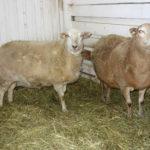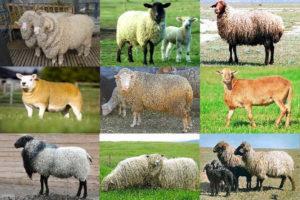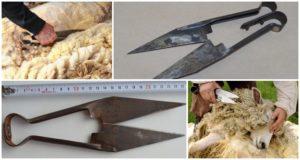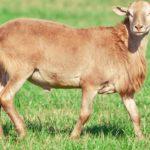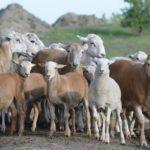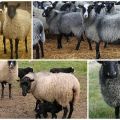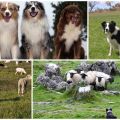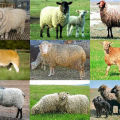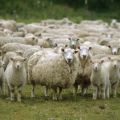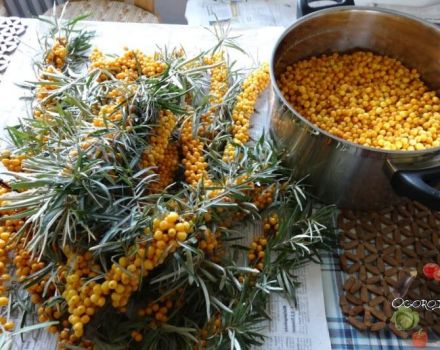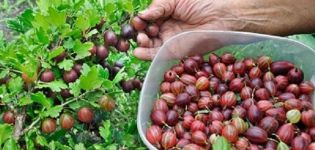Description and characteristics of the sheep of the Katun breed which do not need to be sheared
"Weight like a ram" - this is what they say about a thin person, whose weight does not exceed 45-50 kg. This is how much ordinary rams weigh. The exception is the Katunskaya meat breed of sheep. Males of this breed weigh over 100 kilograms. They were taken out precisely to obtain meat, and not wool, and were sometimes called Katunsky by the people. Although it is necessary to pronounce katumi correctly. The sheep were named after the cattle breeding farm "Katumy".
History of the breed
Work on the breeding of beef sheep with good weight gain was carried out in Tatarstan, where by 2013 the Karmalinskaya sheep was obtained, it is also Nizhnekamsk, it is also Tatar, a sheep. The males weighed about 90 kg. However, in 2018, a presentation of a new breed took place, the weight of males exceeded 100-110 kilograms. The breed was named Katumskaya.
At the beginning of the 21st century, the Katumy farm, which specialized in animals of the Romanov breed, began breeding work to breed a meat breed of sheep. She had to meet a number of characteristics. The main ones were good stable weight gain, high meat production and the absence of long hair that needed to be cut regularly. This is due to the rise in the cost of the shearing process and a drop in demand for sheep's wool and skins.
Breeding specialist Lebed O.S. seriously approached the issue of selection of parental pairs for the new breed. 20 heads of pedigree short-haired rams of the Katadin breed were brought from North America. Local sheep of the Romanov breed were used as a broodstock. They have already been adapted to the climatic conditions of the northwestern region of Russia. A new breed was obtained by the method of absorptive crossing and rigid culling. In 2018, she was registered as a beef breed of sheep with short natural wool.

Description and characteristics of katum sheep
Animals of both sexes are distinguished by a strong barrel-shaped body with well-developed muscles. The body is covered with coarse short hair. With the onset of autumn, the undercoat appears, which disappears during the spring molt. The color is light fawn or brown, with various spots, most often white and red. The muzzle, front and hind legs do not have fleece hair. The head is small, the profile is straight. The ears are semi-erect, and the female and male do not have horns.
The live weight of adult rams is 100-130 kilograms, the height at the withers reaches 80-90 centimeters. Bright weigh up to 80 kilograms, their height is 70-80 centimeters.
Main positive and negative aspects
The breed has numerous positive characteristics:
- early maturity;
- strong immunity;
- weight gain even on meager feed;
- rapid growth of young animals, monthly lambs weigh up to 12-15 kg;
- high fertility, mainly twins and triplets are born;
- all the body's forces are spent on growth and weight gain, and not on long thick hair;
- no need to cut, molting takes place in a natural way, which does not require additional physical and material costs;
- there is no pronounced seasonal cyclicality in sexual behavior;
- rams recover very quickly after intensive mating;
- calm, phlegmatic character;
- high slaughter yield of meat, it is 53-59%.
The biggest plus of the breed is the tasty and healthy meat. Its characteristics do not change with the age of the animal. It does not have a specific lamb flavor and is similar to veal. Even the best breed has flaws. The disadvantages of the Katunskaya sheep are:
- heterogeneous, from the point of view of genetics, livestock;
- about 5% of the livestock is culled for the black color of the coat and horn buds;
- in the warm season they need high herbage.
Despite the fact that the breed has passed the official registration, traits of the Romanov sheep may appear in the offspring. Therefore, work on improving the livestock continues.
The nuances of maintenance and care
Sheep of the Katun breed well tolerate both heat and cold. As a rule, a windproof shed is built for them for the winter, in a place well-lit by the sun, and a corral of three walls with a canopy for the summer.
IN
The sand lets through all the excess and retains the smell. Cushion renewal is done in summer when the herd is grazing.

Diet
In the cold season, the main diet of the Katun sheep is high-quality hay. It should always be in animal feeders. In the summertime, animals eat green grass in pastures. Despite the fact that sheep prefer to choose more tasty grass, in lean years they can graze in places with poor grass and keep weight gain at the level stated in the breed characteristics.
The diet must include salt slimes. It is advisable to add a small amount of grain and mixed feed to the menu of animals, especially in winter. Lactating queens need a little more grain than sheep in other periods of life.
Silage, vegetables, mineral supplements can be added to the diet of animals of the Katum breed. It is useful to give swill from steamed compound feed, boiled vegetables. They need water at least twice a day; in winter, the water is heated.

Animal breeding
Animals of the Katum breed reach puberty at 16-20 weeks. Mating can be started if the weight of the queens exceeds 70% of the weight of an adult animal. A month before, animals begin to feed well, including vitamins and mineral supplements in the diet. The mating is usually carried out in a free way. In some farms, frozen semen is used, and a month after that, the presence of a fetus is determined using an ultrasound scan.
The gestation period lasts about 150 days. After that, one, two, or even three lambs are born. It is important to ensure that the first food for them is the mother's colostrum.
Diseases and prevention from them
Sheep of the Katum breed are resistant to hoof diseases, they rarely undergo helminthic invasions. They got strong immunity to the main diseases of sheep from the American catadins.
Animals of this breed must be systematically checked for the presence of skin parasites. For the prevention of diseases, sheep must be vaccinated.The most dangerous diseases are:
- Hemorrhagic enteritis or eterotoxemia, type C - the disease affects young animals during the transfer from mother's milk to other feed, timely vaccination is effective.
- Tetanus is dangerous for animals during castration, other operations and wounds, to prevent vaccination.
Breeding area
The first territory where they began to breed Katum sheep was the Leningrad region. Here beef sheep are bred in Boksitogorsky, Vsevolzhsky, Priozersky districts. Today breeding animals are sold to other regions. Sheep breeders of foreign countries, including England, have shown interest in this breed.

